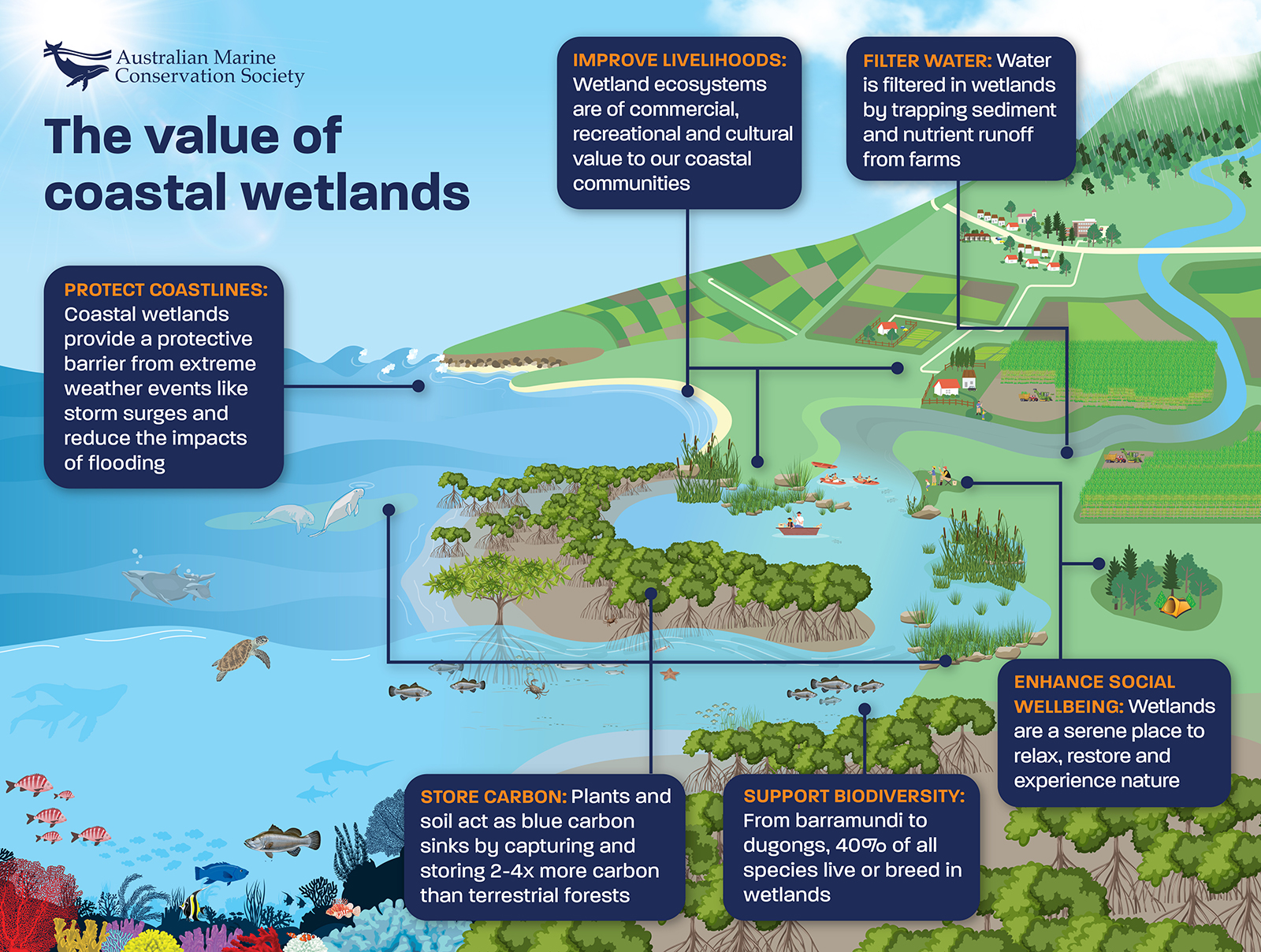There is more to wetlands than meets the eye.
Wetlands are biodiverse ecosystems that support an incredible amount of marine and freshwater life and provide multiple benefits to society and our environment.
Coastal wetlands play a significant role in the catchment area of the Great Barrier Reef, connecting the ocean to the land through waterways such as rivers, creeks and estuaries.
The Reef catchment comprises coastal and lagoon ecosystems, with 35 major river catchments and 14 types of coastal ecosystems, supporting over 5,000 marine and freshwater species.
Due to the many natural processes that occur in wetlands, they have a hidden and unique superpower – their ability to help tackle the biggest threats to the Reef like climate change and water pollution.
